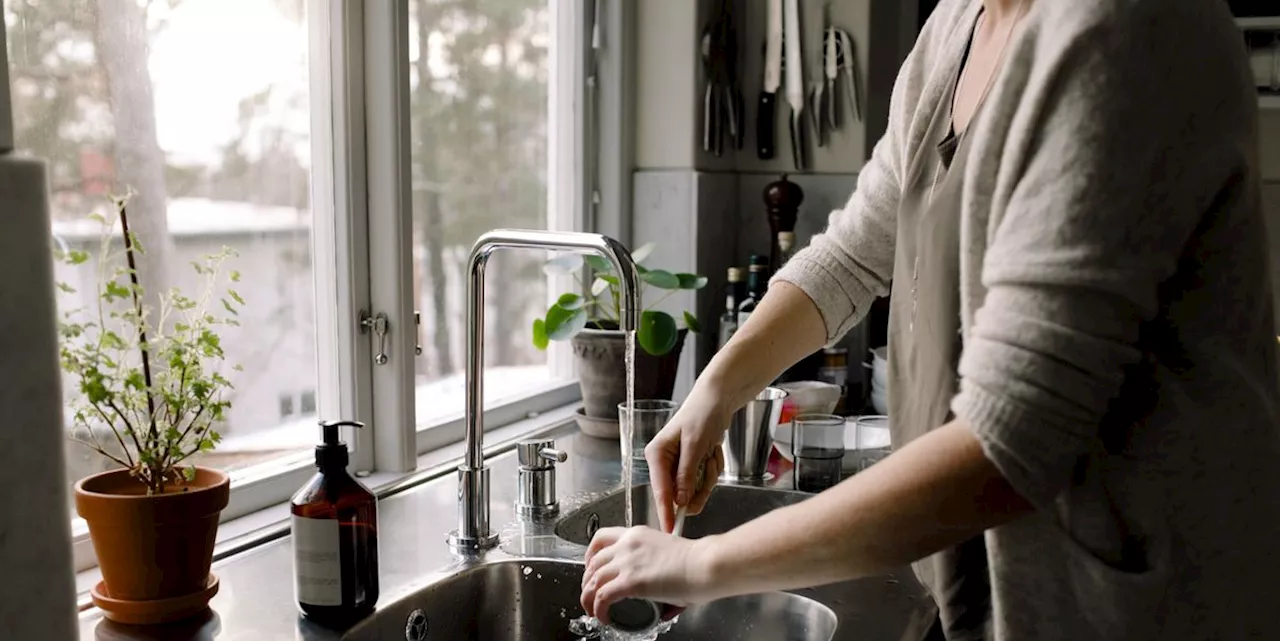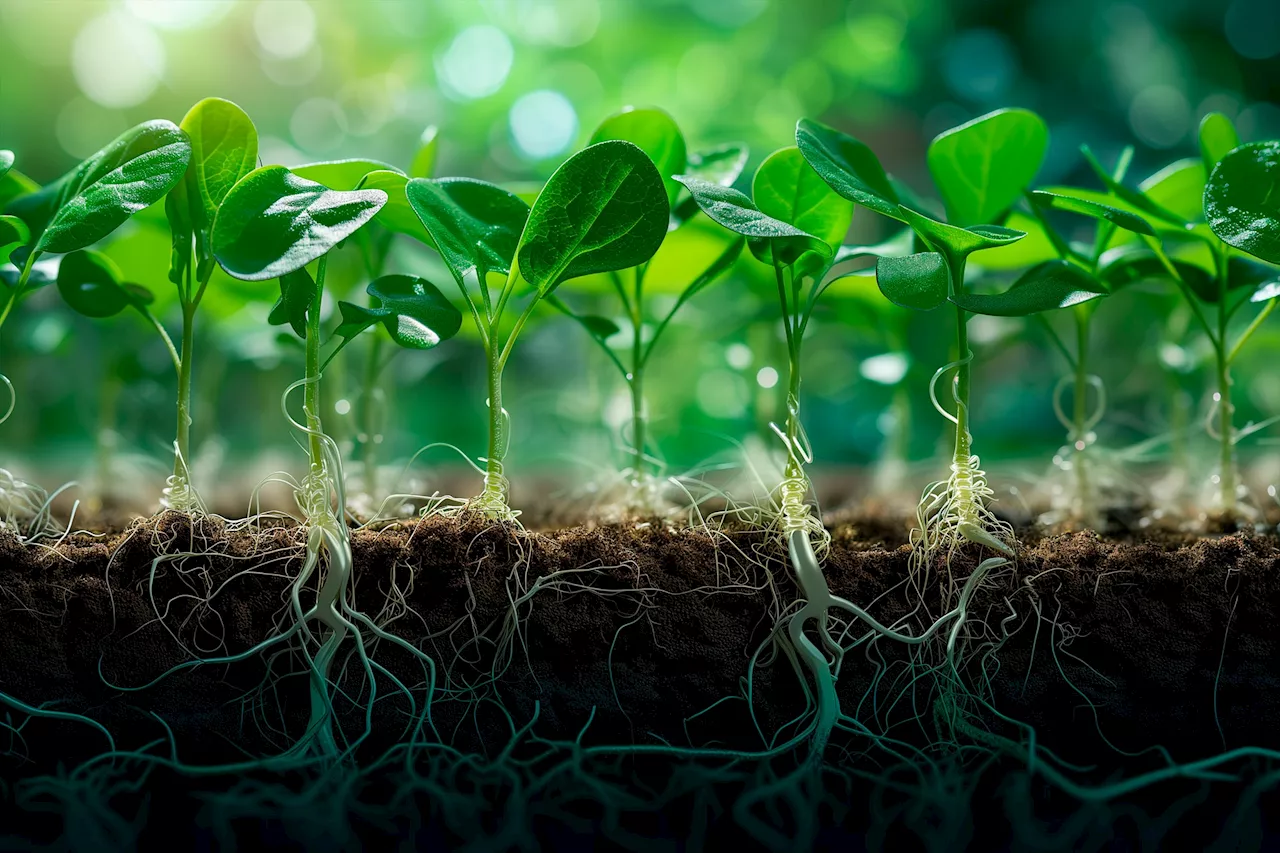Science, Space and Technology News 2024
A recent study on leguminous plants has uncovered the role of IRON MAN peptides in facilitating the collection of iron into root nodules during rhizobial symbiosis. This process is vital for nitrogen fixation, a key aspect of plant growth and nitrogen homeostasis. Credit: SciTechDaily.com
IMA peptides in legumes enhance iron acquisition for nitrogen fixation, offering insights into sustainable agriculture practices. Leguminous plants have a mechanism to efficiently acquire nitrogen, which is an essential macronutrient for growth, through the nitrogen-fixing bacteria rhizobia. Root nodules are organs on plant roots that facilitate the symbiotic relationship. Rhizobia colonizes these nodules and fix nitrogen by converting nitrogen from air into ammonia.
The research group previously identified a mechanism for regulating rhizobial symbiosis in response to the presence of nitrogen in the soil. This study builds on previous studies by clarifying the underlying mechanism of iron acquisition in response to nitrogen, which provides further insight into the mechanisms of plant adaptation to the environment.
Reference: “IMA peptides regulate root nodulation and nitrogen homeostasis by providing iron according to internal nitrogen status” by Momoyo Ito, Yuri Tajima, Mari Ogawa-Ohnishi, Hanna Nishida, Shohei Nosaki, Momona Noda, Naoyuki Sotta, Kensuke Kawade, Takehiro Kamiya, Toru Fujiwara, Yoshikatsu Matsubayashi and Takuya Suzaki, 29 January 2024,This research was supported by Ministry of Education, Culture, Sports, Science and Technology KAKENHI grants ; JSTMirai Program to T.S.
México Últimas Noticias, México Titulares
Similar News:También puedes leer noticias similares a ésta que hemos recopilado de otras fuentes de noticias.
 New Research Reveals 'Anthropogenic Nitrogen Pump' Effect in Coastal SeasA collaborative study between the University of East Anglia and the Ocean University of China has identified the ‘Anthropogenic Nitrogen Pump’ effect in coastal seas. This phenomenon, driven by human activities, leads to an imbalance in nitrogen and phosphorus levels, affecting the growth and type of microalgae.
New Research Reveals 'Anthropogenic Nitrogen Pump' Effect in Coastal SeasA collaborative study between the University of East Anglia and the Ocean University of China has identified the ‘Anthropogenic Nitrogen Pump’ effect in coastal seas. This phenomenon, driven by human activities, leads to an imbalance in nitrogen and phosphorus levels, affecting the growth and type of microalgae.
Leer más »
 Alabama Executes Inmate Using Nitrogen GasAlabama becomes the first U.S. state to execute a person using nitrogen gas, killing 58-year-old Kenneth Smith after the Supreme Court rejects his appeal. Smith was convicted for a murder-for-hire killing in 1988.
Alabama Executes Inmate Using Nitrogen GasAlabama becomes the first U.S. state to execute a person using nitrogen gas, killing 58-year-old Kenneth Smith after the Supreme Court rejects his appeal. Smith was convicted for a murder-for-hire killing in 1988.
Leer más »
 New Research Reveals 'Anthropogenic Nitrogen Pump' Effect in Coastal SeasA collaborative study between the University of East Anglia and the Ocean University of China has identified the ‘Anthropogenic Nitrogen Pump’ effect in coastal seas. This phenomenon, driven by human activities, leads to an imbalance in nitrogen and phosphorus levels, affecting the growth and type of microalgae.
New Research Reveals 'Anthropogenic Nitrogen Pump' Effect in Coastal SeasA collaborative study between the University of East Anglia and the Ocean University of China has identified the ‘Anthropogenic Nitrogen Pump’ effect in coastal seas. This phenomenon, driven by human activities, leads to an imbalance in nitrogen and phosphorus levels, affecting the growth and type of microalgae.
Leer más »
 Alabama Executes Inmate Using Nitrogen GasAlabama becomes the first U.S. state to execute a person using nitrogen gas, killing 58-year-old Kenneth Smith after the Supreme Court rejects his appeal. Smith was convicted for a murder-for-hire killing in 1988.
Alabama Executes Inmate Using Nitrogen GasAlabama becomes the first U.S. state to execute a person using nitrogen gas, killing 58-year-old Kenneth Smith after the Supreme Court rejects his appeal. Smith was convicted for a murder-for-hire killing in 1988.
Leer más »
 People Discover Mold and Bacteria in Their Stanley Cups on TikTokPeople on social media are finding black spots in their water bottles. Doctors say this may be mold or bacteria—but it’s unlikely to make you sick. Here’s exactly how to clean your Stanley cup.
People Discover Mold and Bacteria in Their Stanley Cups on TikTokPeople on social media are finding black spots in their water bottles. Doctors say this may be mold or bacteria—but it’s unlikely to make you sick. Here’s exactly how to clean your Stanley cup.
Leer más »
